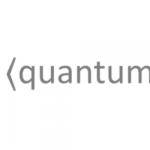Nuclear quantum computing

(TheNextWeb) A trio of separate research teams from three different continents published individual papers indicating similar quantum computing breakthroughs recently. All three were funded in part by the US Army.
Tristan Greene, Editor of NextWeb’s Neural editor of The Next Web’s Neural delves into recent research on error-correction problem in quantum computing; IQT-News summarizes here. Studies are here, here, and here. Greene explains that one of the quantum breakthroughs heralds the onset of the age of nuclear quantum computers.
Each study manages to address the error-correction problem in quantum computing by, essentially, going back to the drawing board. All three teams shared various resources in order to help facilitate each other’s research. The result is that each team was able to build a distinct, silicon-based, two-qubit quantum computing system capable of operating with greater than 99% accuracy. All three teams are trying to put qubits on a silicon chip.
In a press release from the University of New South Wales, Mateusz Madzik, a lead author on the Australian team’s research paper, described how entangling an electron with the nuclei of two phosphorous atoms allowed them to control them as qubits without losing information.
Per Madzik: “If you have two nuclei that are connected to the same electron, you can make them do a quantum operation. While you don’t operate the electron, those nuclei safely store their quantum information. But now you have the option of making them talk to each other via the electron, to realize universal quantum operations that can be adapted to any computational problem.”
Is that safe?
They’re not splitting atoms or fusing them, so there’s probably a pretty close to zero chance that nothing bad will happen. We exploit atoms to do all kinds of things that don’t involve blowing up entire cities.
In this case, the Australian team is exploiting a feature of entanglement that allows them to force communication between qubits that, normally, would either hoard their information or lose it too quickly for use.
It’s likely just as safe as using lasers to create qubits out of light, maybe even safer. But the researchers are hoping it’s the foundation for a paradigm that will be much easier to scale than other systems.



















